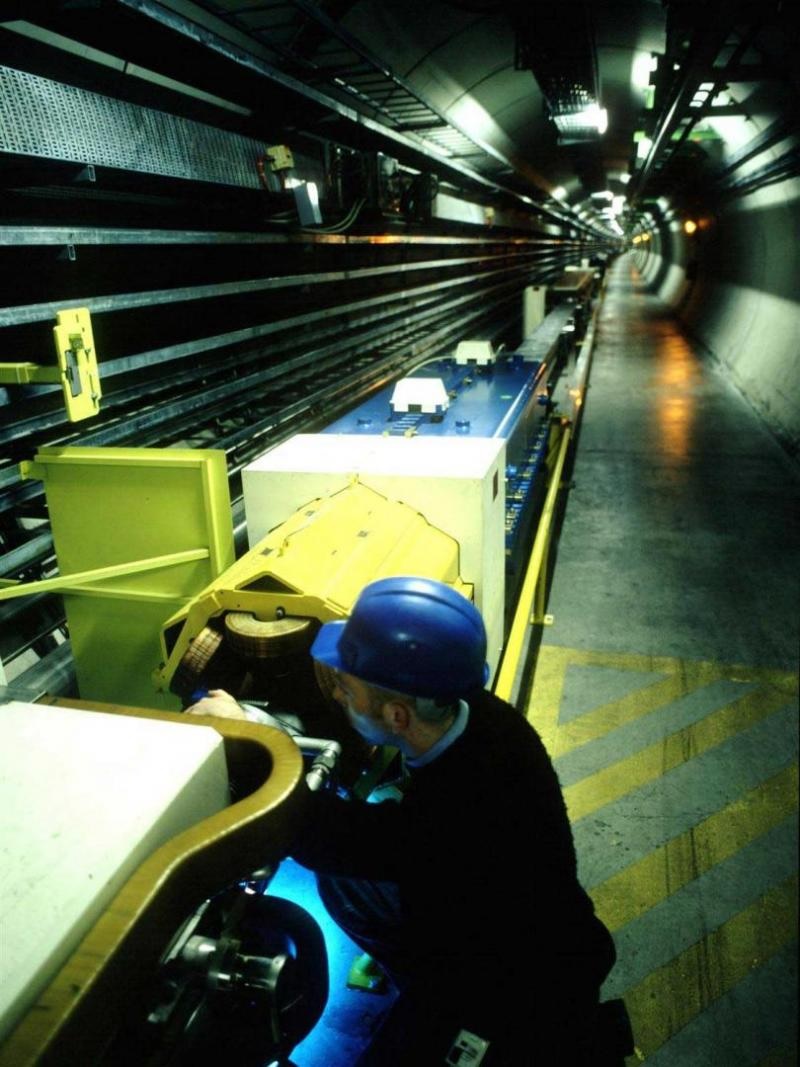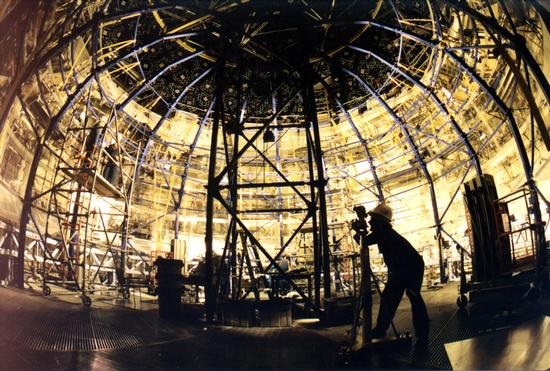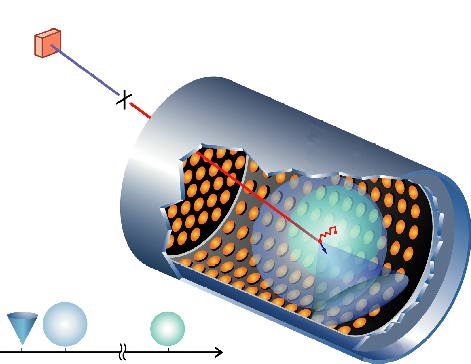11 Jul 2014
What do you call the ghost of a ghost?
If you’re a particle physicist, you might call it a sterile neutrino. Neutrinos, known more colorfully as “ghost particles,” can pass through (almost) anything. If you surrounded the Sun with five light years’ worth of solid lead, a full half of the Sun’s neutrinos would slip right on through. Neutrinos have this amazing penetrating capability because they do not interact by the electromagnetic force, nor do they feel the strong nuclear force. The only forces they feel are the weak nuclear force and the even feebler tug of gravity.

The Perseus galaxy cluster, one of 73 clusters from which mysterious x-rays, possible produced by sterile neutrinos, were observed. Credit: Chandra: NASA/CXC/SAO/E.Bulbul, et al.; XMM-Newton: ESA
When Wolfgang Pauli first postulated neutrinos in 1930, he thought that his proposed particles could never be detected. In fact, it took more than 25 years for physicists to confirm that neutrinos—Italian for “little neutral ones”—were real. Now, physicists are hunting for something even harder to spot: a hypothetical ghostlier breed of neutrinos called sterile neutrinos.
Today, we know of three different “flavors” of neutrinos: electron neutrinos, muon neutrinos and tau neutrinos (and their antimatter equivalents). In the the late 1960s, studies of the electron-type neutrinos emitted by the Sun led scientists to suspect that they were somehow disappearing or morphing into other forms. Measurements made in 1998 by the Super Kamiokande experiment strongly supported this hypothesis, and in 2001, the Sudbury Neutrino Observatory clinched it.
One of the limitations of studying neutrinos from the Sun and other cosmic sources is that experimenters don’t have control over them. However, scientists can make beams of neutrinos in particle accelerators and also study neutrinos emitted by man-made nuclear reactors. When physicists studied neutrinos from these sources, a mystery presented itself. It looked like there weren’t three kinds of neutrinos, but rather four or perhaps more.
Ordinarily, this wouldn’t be cause for alarm, as the history of particle physics is full of the discovery of new particles. However, in 1990, researchers using the LEP accelerator demonstrated convincingly that there were exactly three kinds of ordinary neutrinos. Physicists were faced with a serious puzzle.

LEP at CERN
There were some caveats to the LEP measurement. It was only capable of finding neutrinos if they were low mass and interacted via the weak nuclear force. This led scientists to hypothesize that perhaps the fourth (and fifth and…) forms of neutrinos were sterile, a word coined by Russian physicist Bruno Pontecorvo to describe a form of neutrino that didn’t feel the weak nuclear force.
Searching for sterile neutrinos is a vibrant experimental program and a confusing one. Researchers pursuing some experiments, such as the LSND and MiniBoone, have published measurements consistent with the existence of these hypothetical particles, while others, like the Fermilab MINOS team, have ruled out sterile neutrinos with the same properties. Inconsistencies abound in the experimental world, leading to great consternation among scientists.
In addition, theoretical physicists have been busy. There are many different ways to imagine a particle that doesn’t experience the strong, weak, or electromagnetic forces (and is therefore very difficult to make and detect); proposals for a variety of different kinds of sterile neutrinos have proliferated wildly, and sterile neutrinos are even a credible candidate for dark matter.
Perhaps the only general statement we can make about sterile neutrinos is that they are spin ½ fermions, just like neutrinos, but unlike “regular” neutrinos, they don’t experience the weak nuclear force. Beyond that, the various theoretical ideas diverge. Some predict that sterile neutrinos have right-handed spin, in contrast to ordinary neutrinos, which have only left-handed spin. Some theories predict that sterile neutrinos will be very light, while others have them quite massive. If they are massive, that could explain why ordinary neutrinos have such a small mass: perhaps the mathematical product of the masses of these two species of neutrinos equals a constant, say proponents of what scientists call the “see-saw mechanism”; as one mass goes up, the other must go down, resulting in low-mass ordinary neutrinos and high-mass sterile ones.
Now, some astronomers have proposed sterile neutrinos could be the source of a mysterious excess of x-rays coming from certain clusters of galaxies. Both NASA’s Chandra satellite and the European Space Agency’s XMM-Newton have spotted an excess of x-ray emission at 3.5 keV. It is brighter than could immediately be accounted for by known x-ray sources, but it could be explained by sterile neutrinos decaying into photons and regular neutrinos. However, one should be cautious. There are tons of atomic emission lines in this part of the x-ray spectrum. One such line, an argon emission line, happens to be at 3.62 keV. In fact, if the authors allow a little more of this line than predicted, the possible sterile neutrino becomes far less convincing.
Thus the signal is a bit sketchy and could easily disappear with a better understanding of more prosaic sources of x-ray emission. This is not a criticism of the teams who have made the announcement, but an acknowledgement of the difficulty of the measurement. Many familiar elements emit x-rays in the 3.5 keV energy range, and though the researchers attempted to remove those expected signals, they may find that a fuller accounting negates the “neutrino” signal. Still, the excess was seen by more than one facility and in more than one cluster of galaxies, and the people involved are smart and competent, so it must be regarded as a possible discovery.
It is an incredible long shot that the excess of 3.5 keV x-ray from galaxy clusters is a sterile neutrino but, if it is, it will be a really big deal. The first order of business is a more detailed understanding of more ordinary emission lines. Unfortunately, only time will tell if we’ve truly seen a ghost.
See the full article here .
Please help promote STEM in your local schools.
NOVA is the highest rated science series on television and the most watched documentary series on public television. It is also one of television’s most acclaimed series, having won every major television award, most of them many times over.









https://metaphyzics.wordpress.com
LikeLike